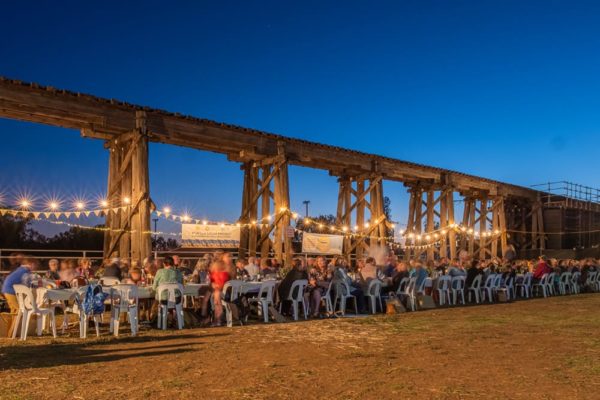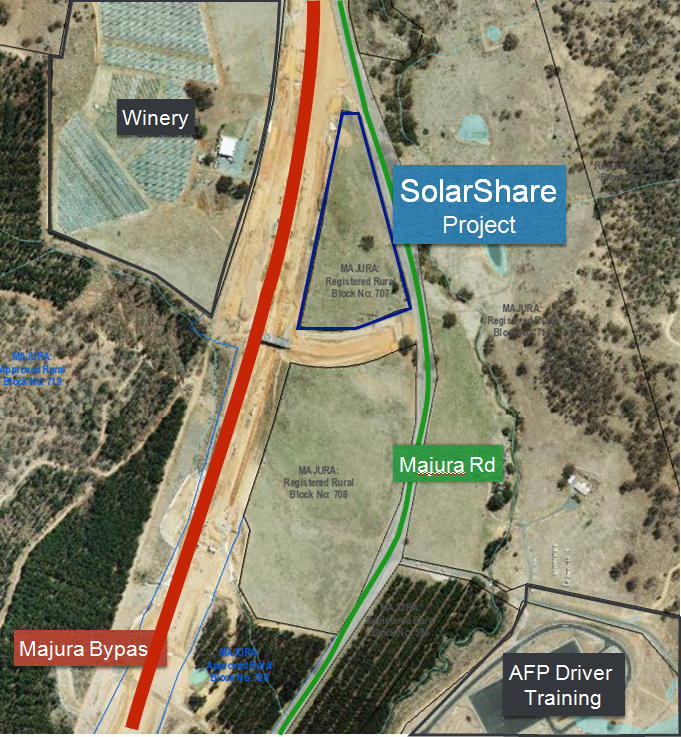Solar energy developer Epho has signed on to design and construct a 1. 3MW community solar farm in the Majura Valley, a first for Canberra. Epho signed the contract with SolarShare, a 520-strong local group set to be Majura Valley Community Solar Farm co-owners.
SolarShare has already raised over $4.36 million from the more than 520 constituent members, supported by $800,000 in funding from renewable energy developer CWP Renewables. Community membership to the solar farm requires investors to take part in the co-operative project, the with the smallest investment set at $500 and the largest at $100,000 per member.
One such investor, Cate Ealing, told ABC News in March this year that she is looking forward to the excitement of seeing the solar panels as she drives down the highway. “I wanted to do something practical,” said Ealing, “but I couldn’t do solar in this apartment complex, so investing in SolarShare gave me an opportunity, at the community level, to do something that the federal government wasn’t doing.”
Although SolarShare’s original proposal was for a solar farm of up to 4 MW capacity, it chose to build 1 MW because it allowed the company to take advantage of the ACT Government’s Community Solar initiative and sell its output to the grid for a guaranteed Feed in Tariff of 19.56 cents per kilowatt hour. Profits from the resulting annual revenue of more than $360,000 will be returned to investors.
“The size of this project is relatively small compared to large utility-scale solar farms and large compared to the typical residential or commercial solar projects,” said Epho Managing Director, Oliver Hartley. ” But this should ensure a swift design and construction process for such an experienced development outfit.
“We have now entered the detailed design phase and are excited to commence construction in August,” said Axel La Toison, Epho’s Senior Project Manager. “The solar farm will start generating clean, renewable energy before Christmas this year.”
Both Epho and Solar Share consider the development of this community solar farm to be a micro demonstration of what Australia’s macro clean recovery from the Covid-19 pandemic could look like. “We are very happy to play our role in this exciting project,” said Matt Scaddan, Epho’s head of Business Development. “We hope it will inspire similar activities across the country.”
The solar farm will be constructed of approximately 5,000 single-axis trackers on land leased from Mount Majura Winery, begging the question, is there anything wine can’t do?
Community Solar
Community Solar farming is growing throughout Australia, particularly in rural areas. Take drought-stricken Manilla in North-West New South Wales (NSW), a town which came together back in 2013 to form Manilla Community Renewable Energy Inc (MCRE) so that it could develop a 4.9 MW community solar farm to provide locals with cheap, clean energy.
In March this year, the Manilla Solar Farm received a huge boost when NSW Minister for Energy and Environment Matt Kean announced a $3.5 million grant for the Manilla Solar Project toward the installation of an innovative hydrogen battery storage system developed at the University of New South Wales (UNSW) and H2Store. According to UNSW, solid-state hydrogen technology will be installed in 20-foot containers with an energy density of 17 MWh. The battery will be a first of this kind in the world in terms of scale and capable of storing solar energy for up to six hours.

Image: Providence Asset Group
The community model is a ‘win-win’ for both the host and community, so it is no surprise towns around regional Australia are looking to establish their own community solar projects. The small Victorian wheat belt town of Natimuk secured a state government grant in August for the construction of its “entirely community driven” 1.6MW solar farm.
In July 2019, pv magazine Australia spoke with Cam Klose of community solar company Indigo Power. Klose spoke about the litany of community problems community-owned clean energy generation can solve. “Renewable energy provides communities with energy alternatives and affordable solutions,” said Klose, who is working to make the town of Yackandandah 100% renewable, “but not only that, community energy means that people feel the tangible benefits of renewable energy.
This content is protected by copyright and may not be reused. If you want to cooperate with us and would like to reuse some of our content, please contact: editors@pv-magazine.com.









1 comment
By submitting this form you agree to pv magazine using your data for the purposes of publishing your comment.
Your personal data will only be disclosed or otherwise transmitted to third parties for the purposes of spam filtering or if this is necessary for technical maintenance of the website. Any other transfer to third parties will not take place unless this is justified on the basis of applicable data protection regulations or if pv magazine is legally obliged to do so.
You may revoke this consent at any time with effect for the future, in which case your personal data will be deleted immediately. Otherwise, your data will be deleted if pv magazine has processed your request or the purpose of data storage is fulfilled.
Further information on data privacy can be found in our Data Protection Policy.